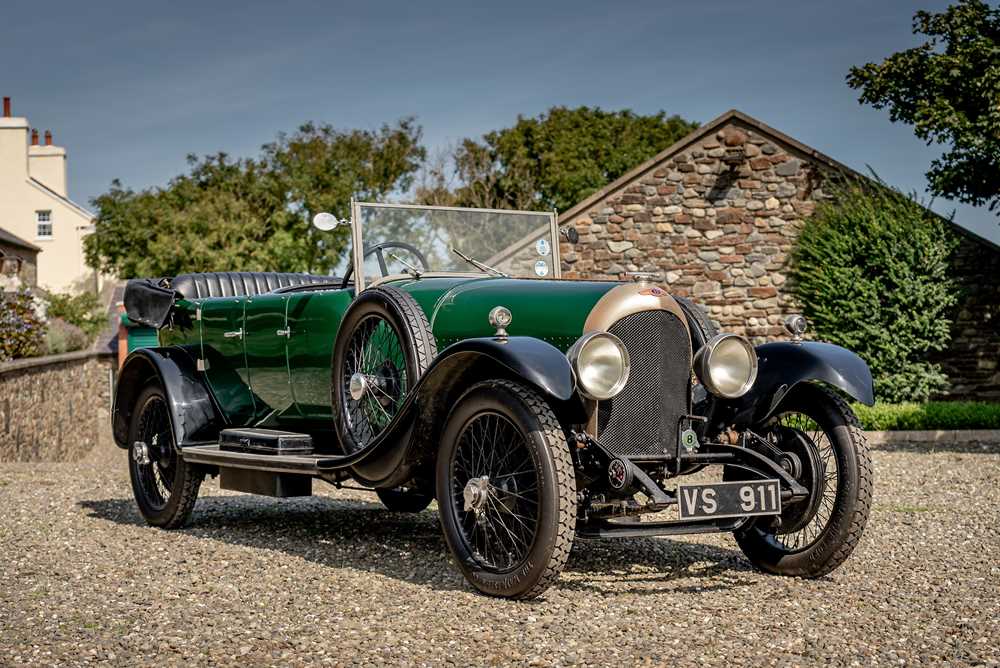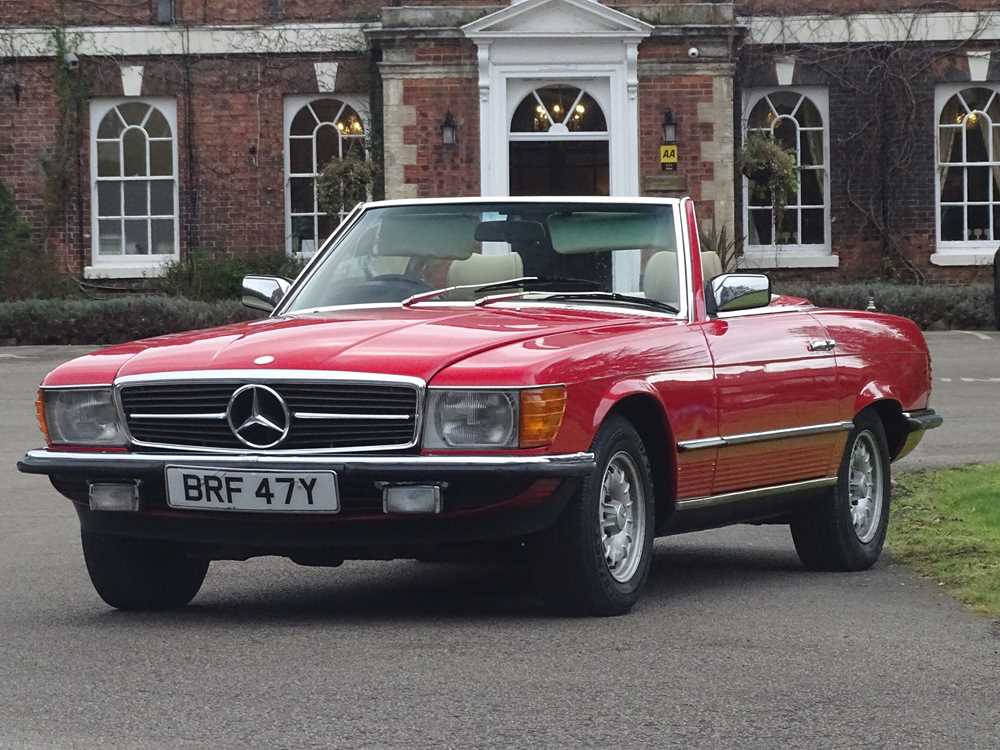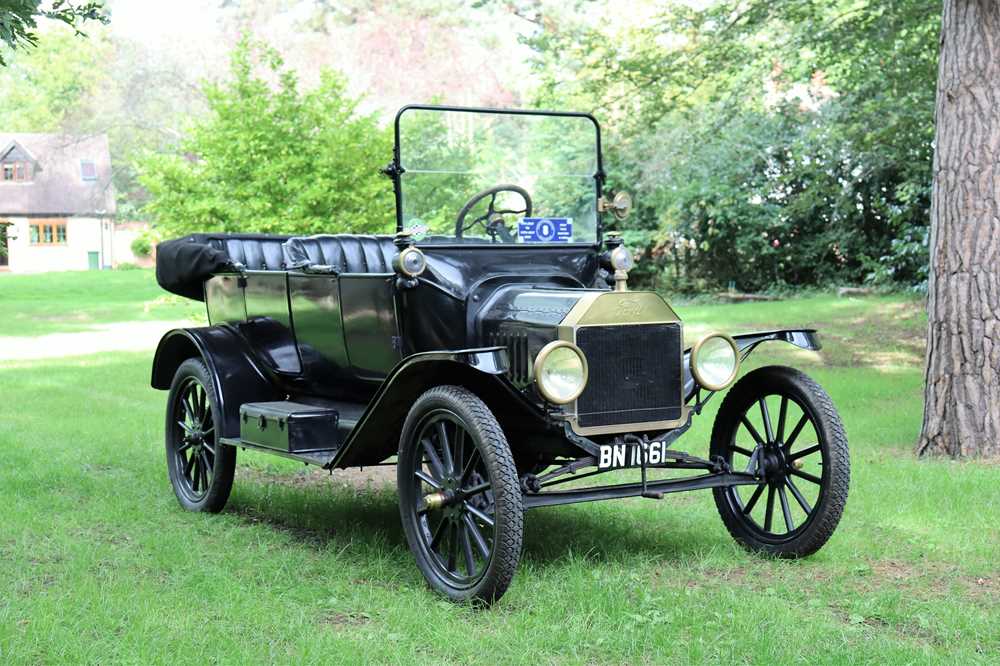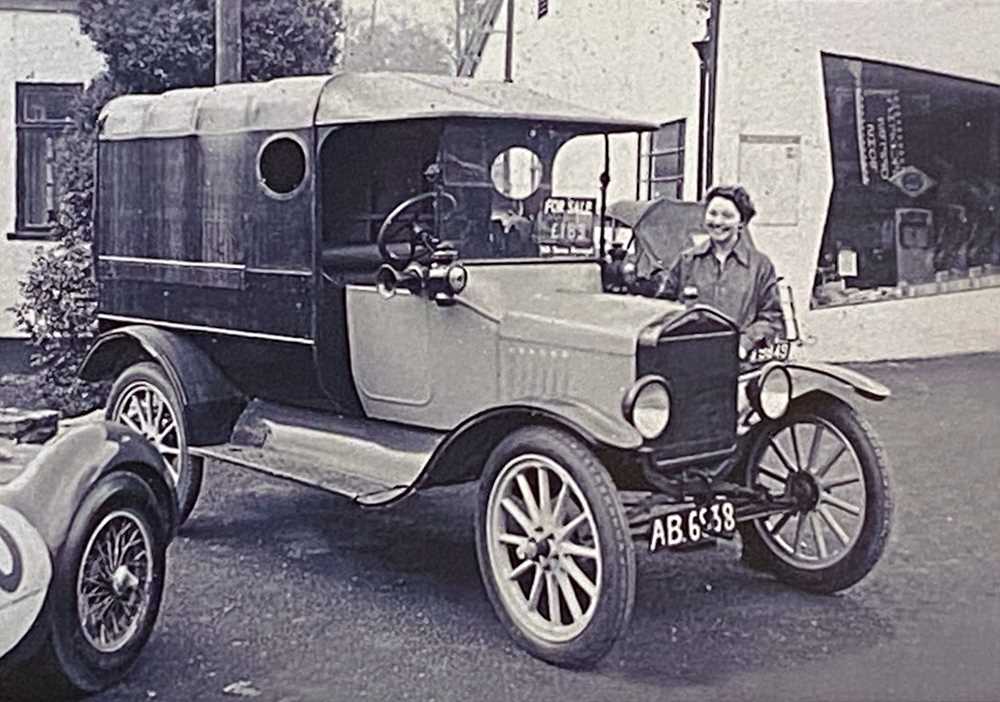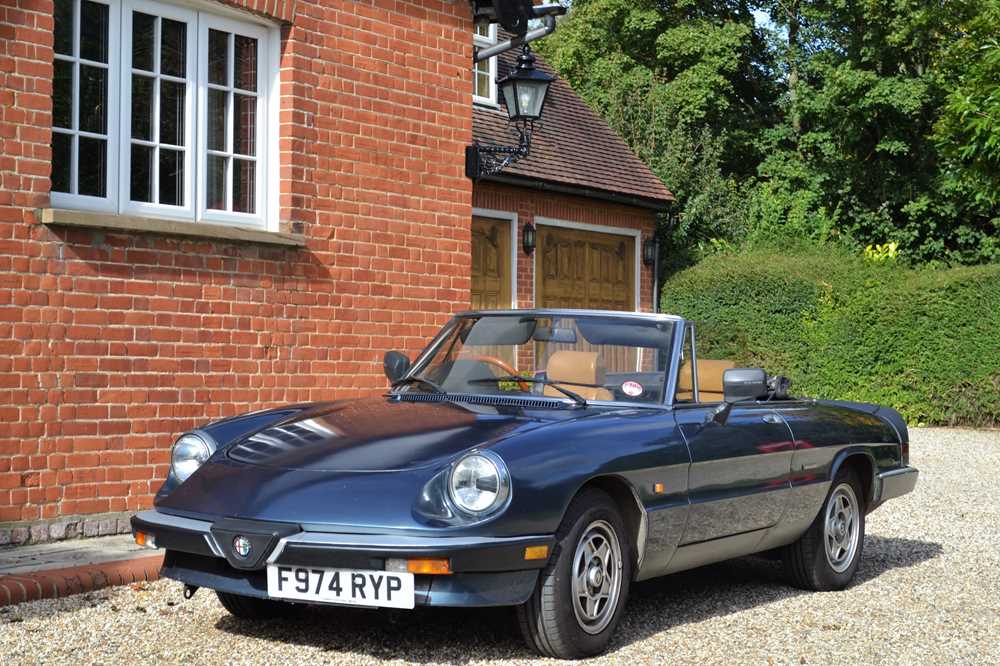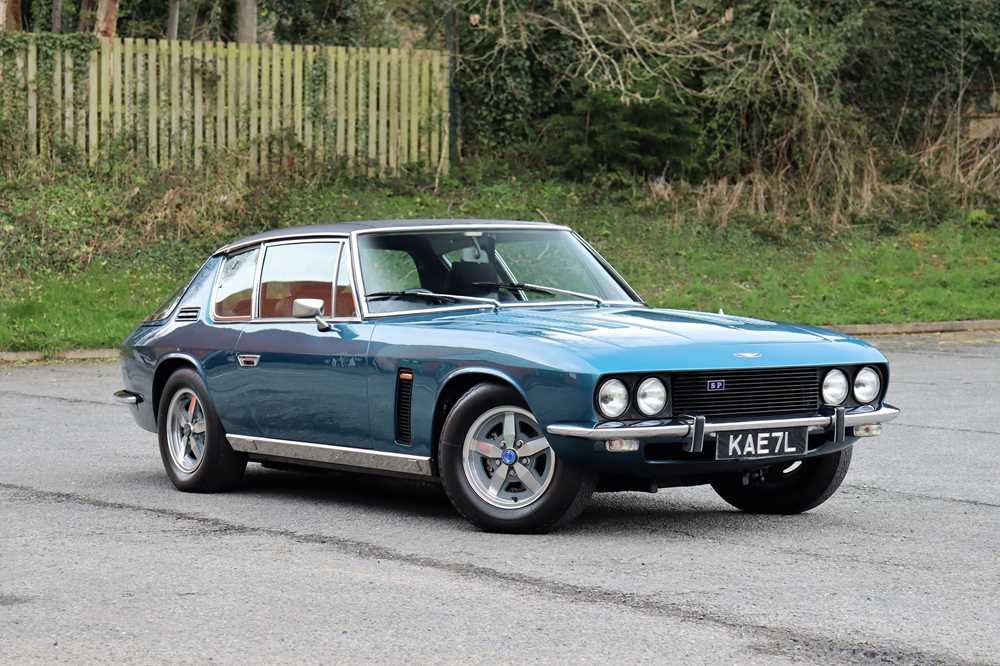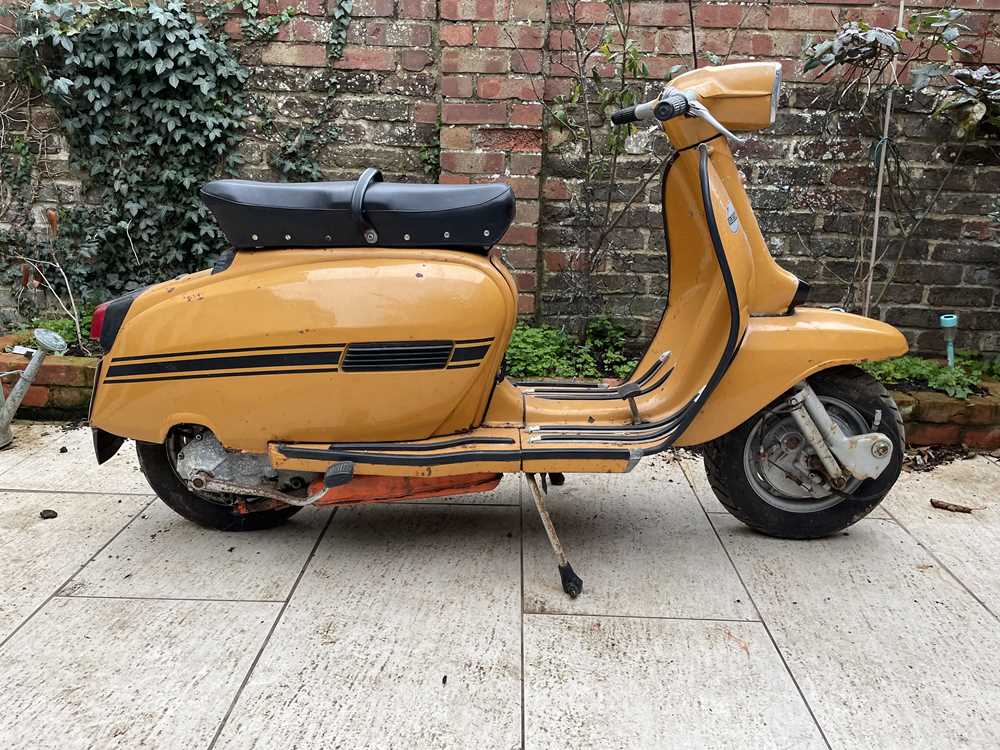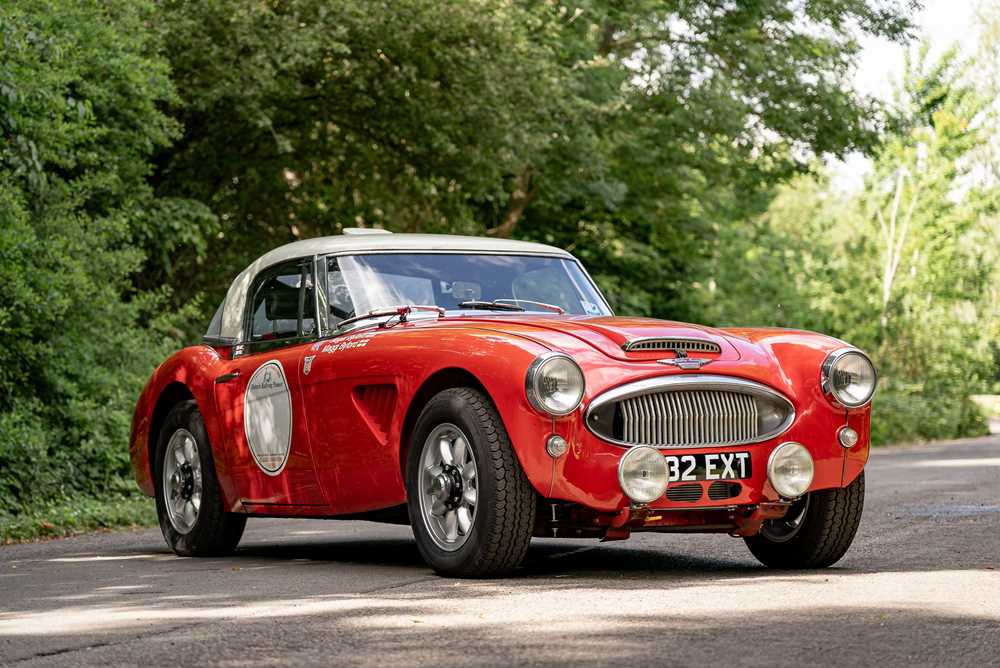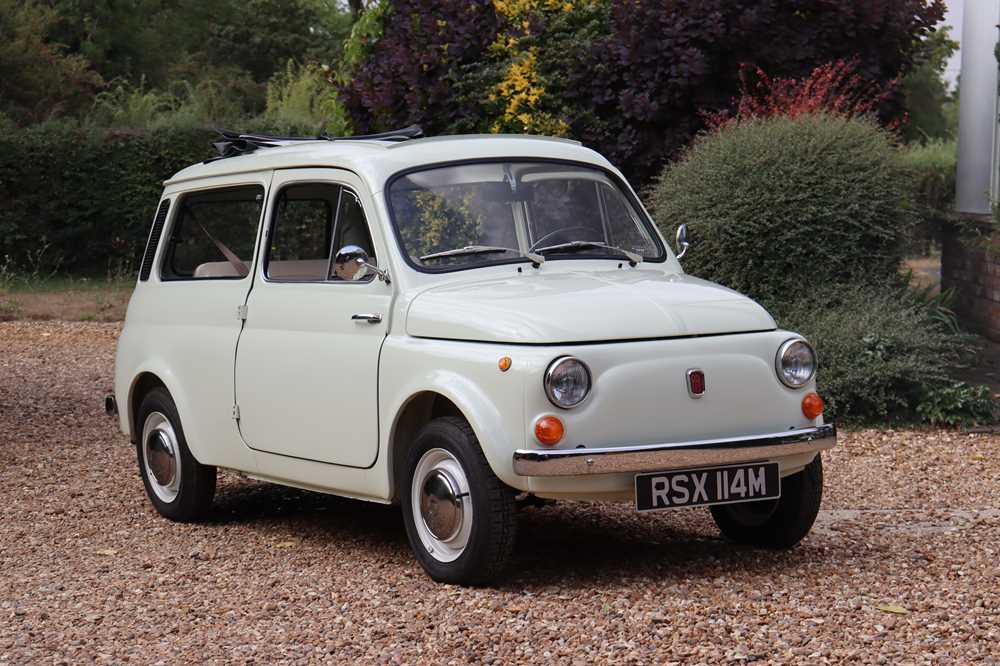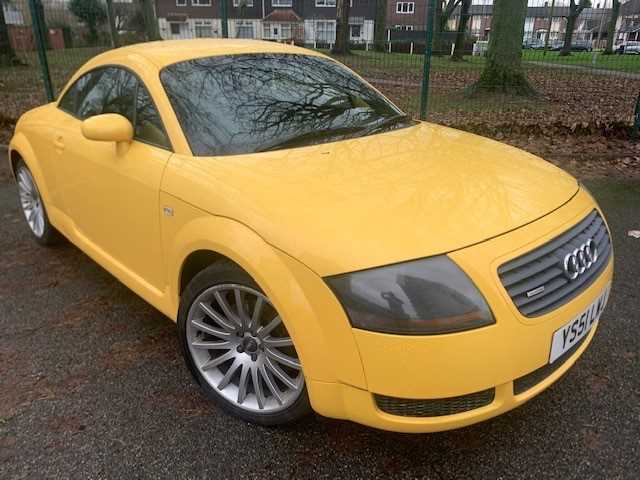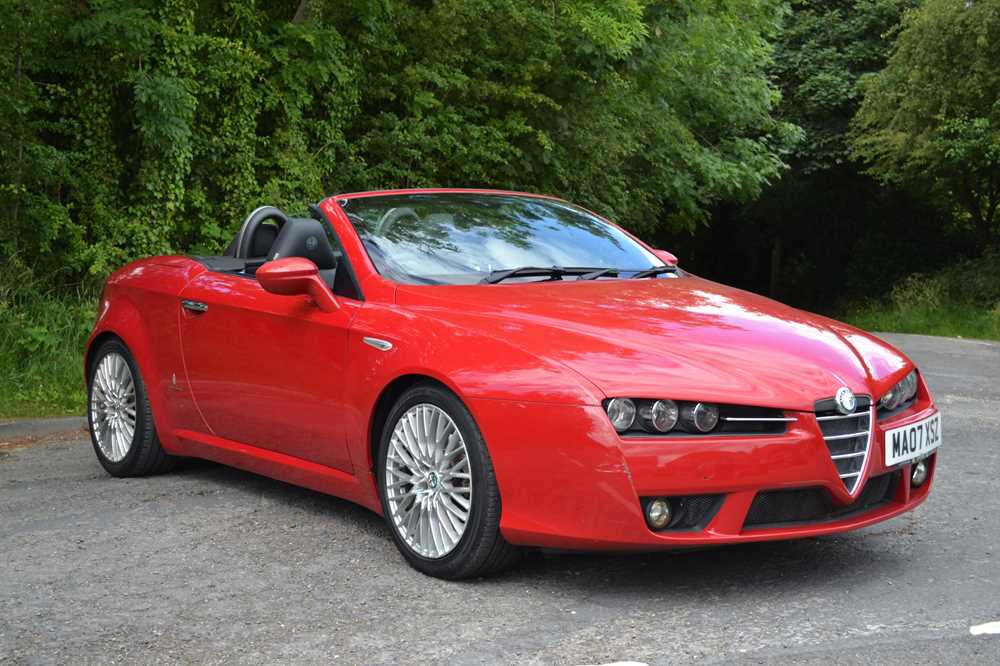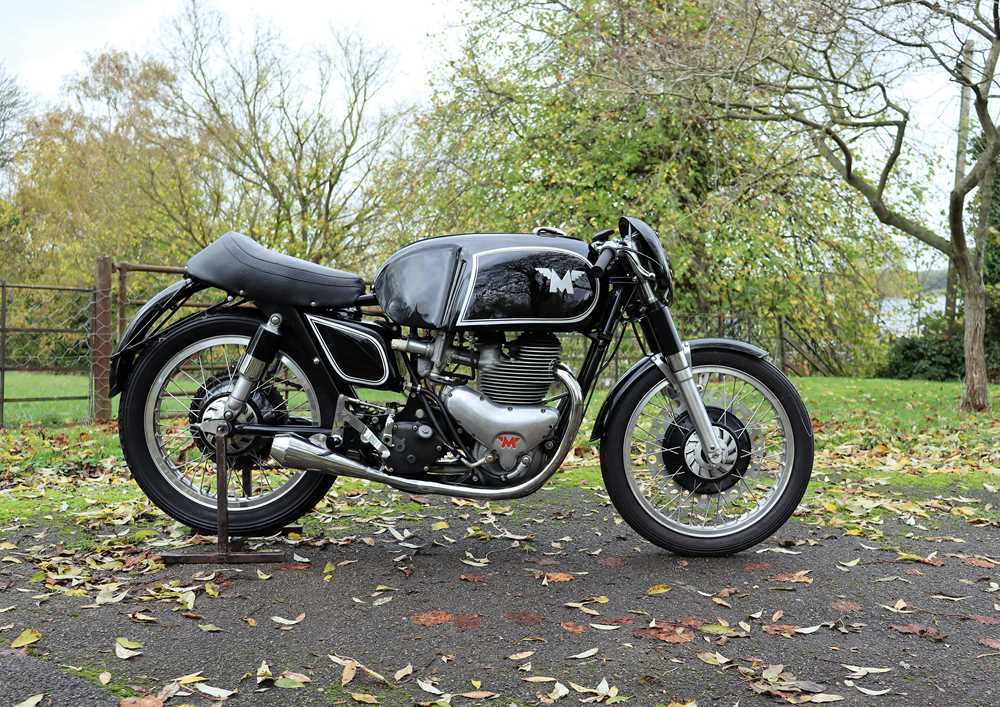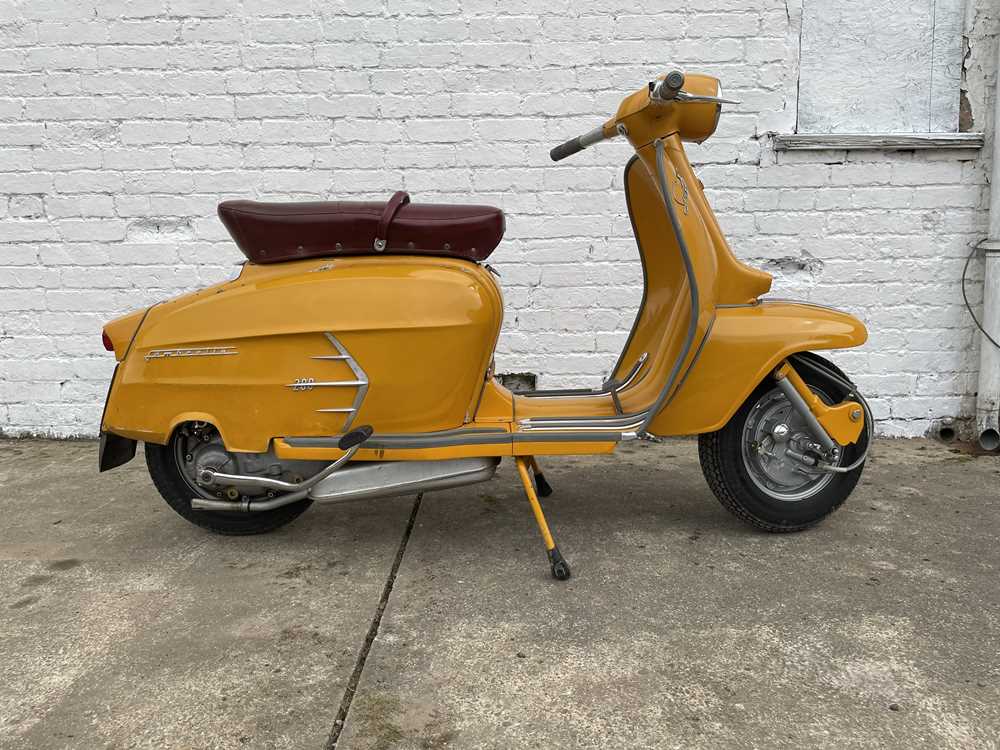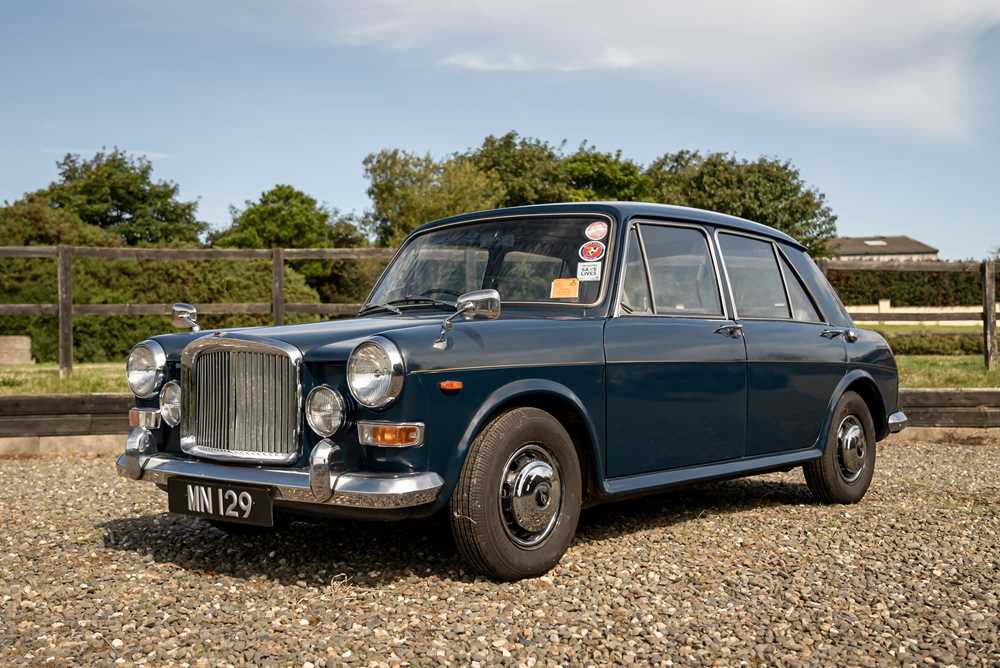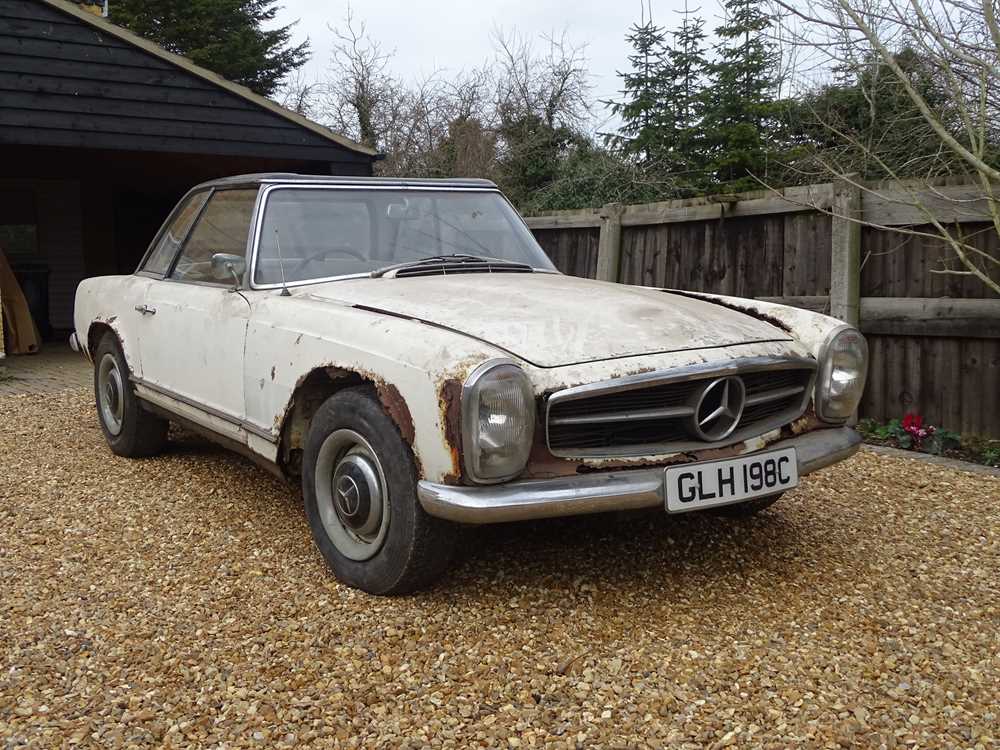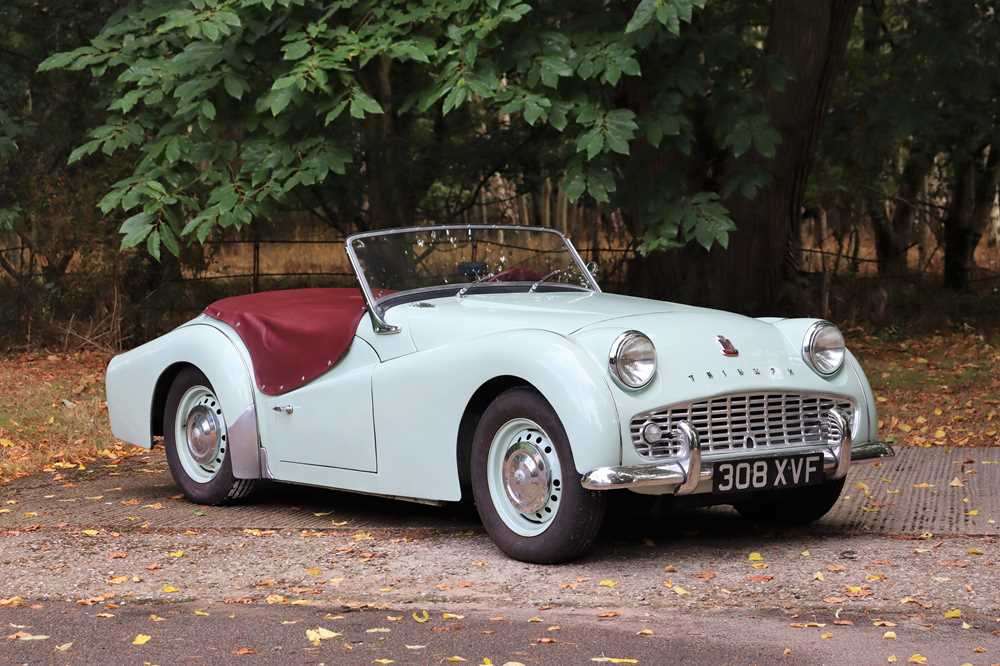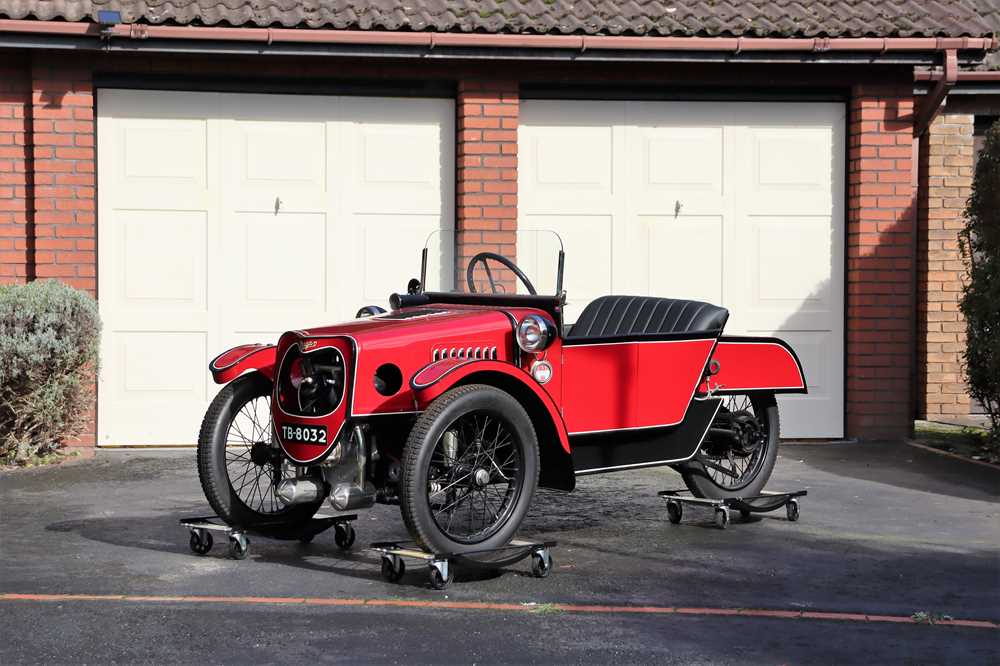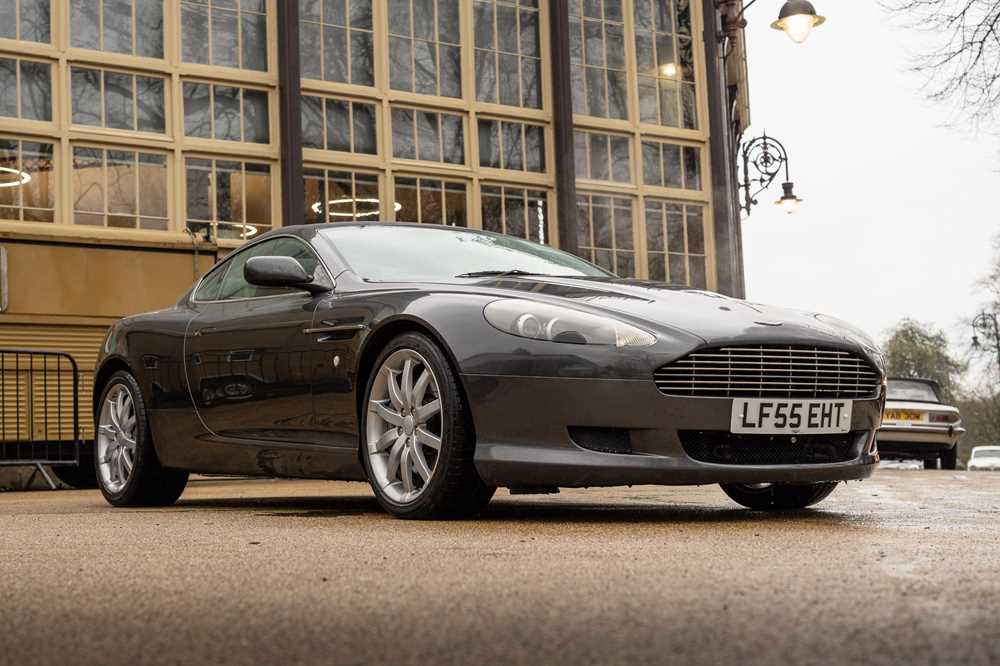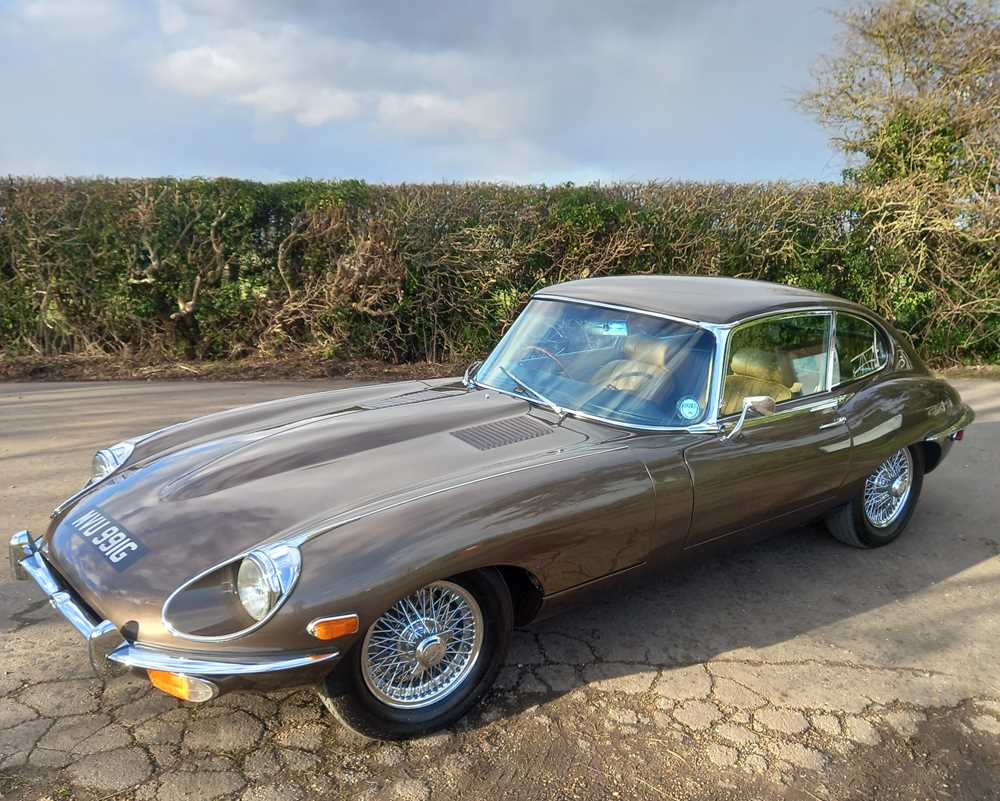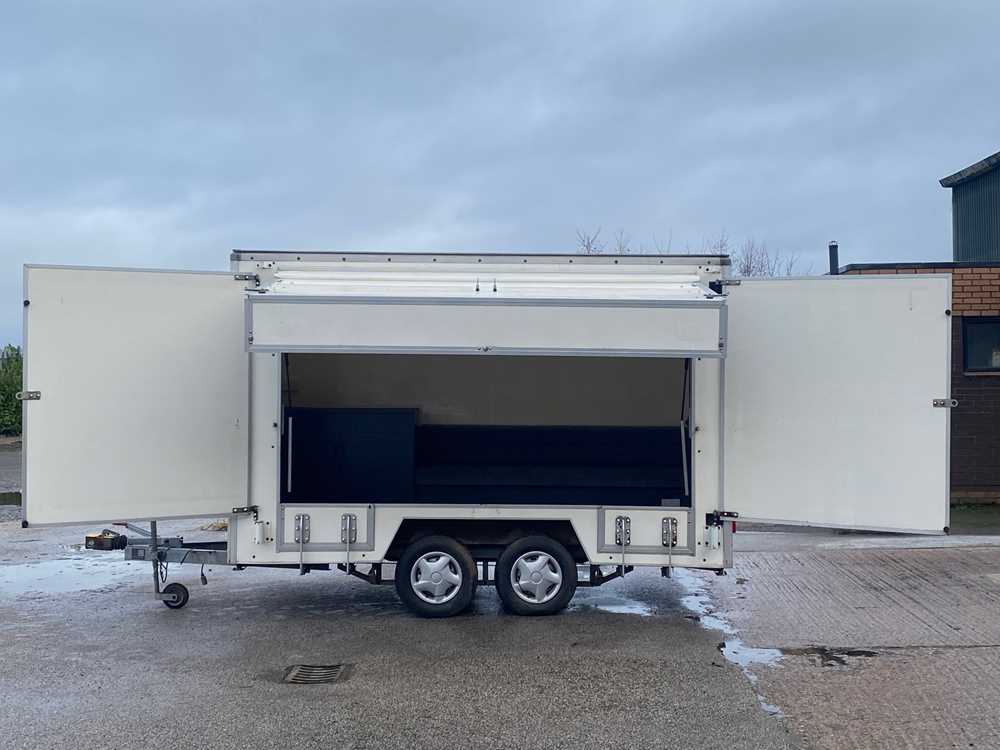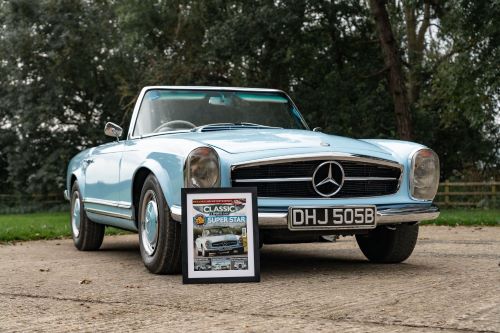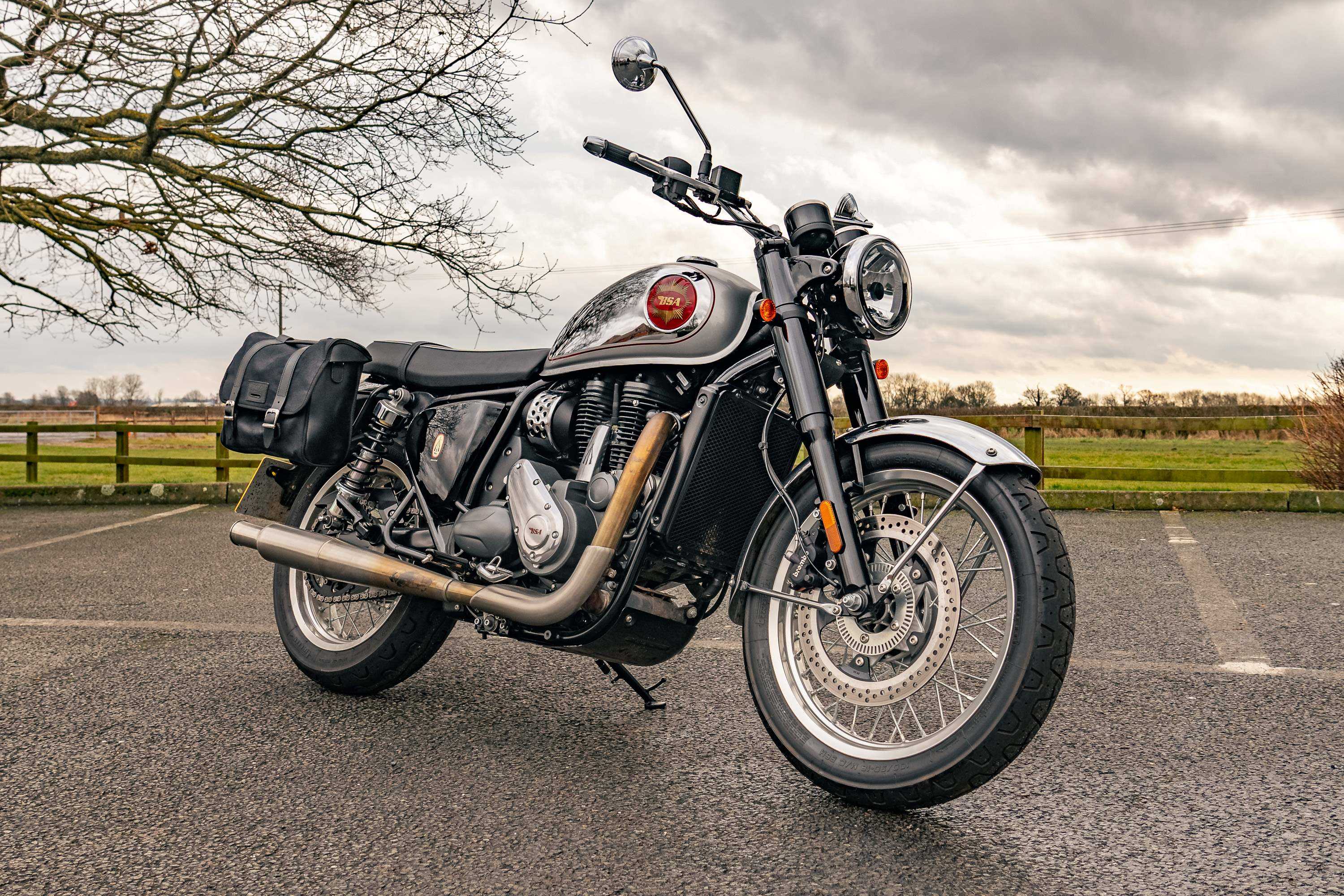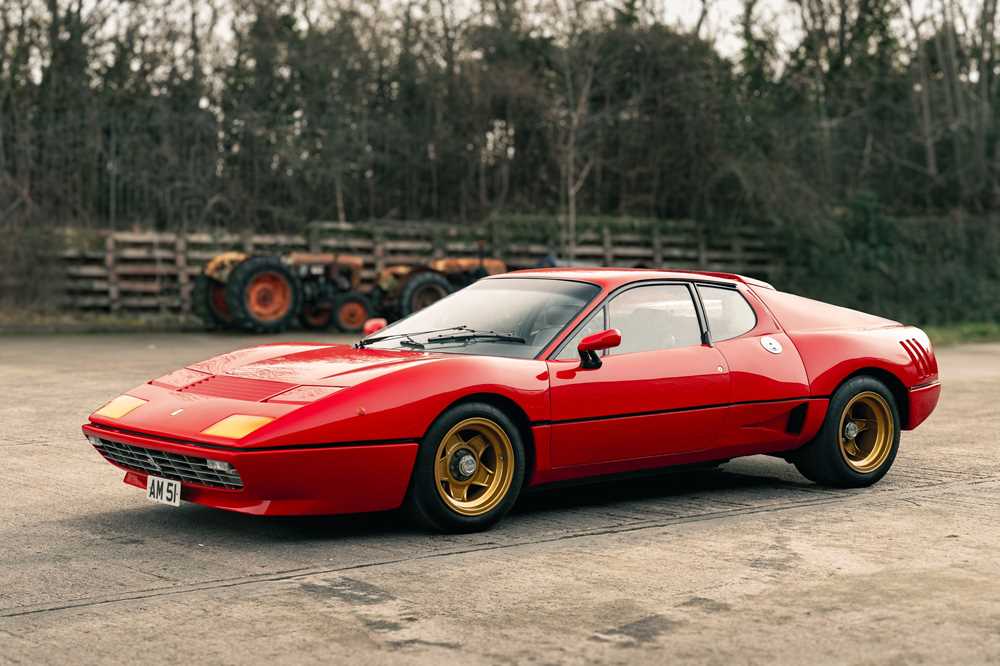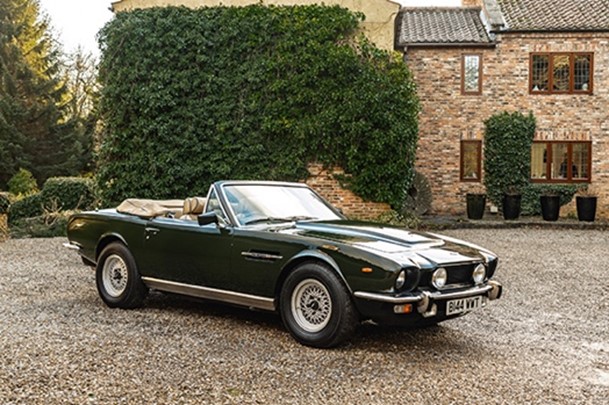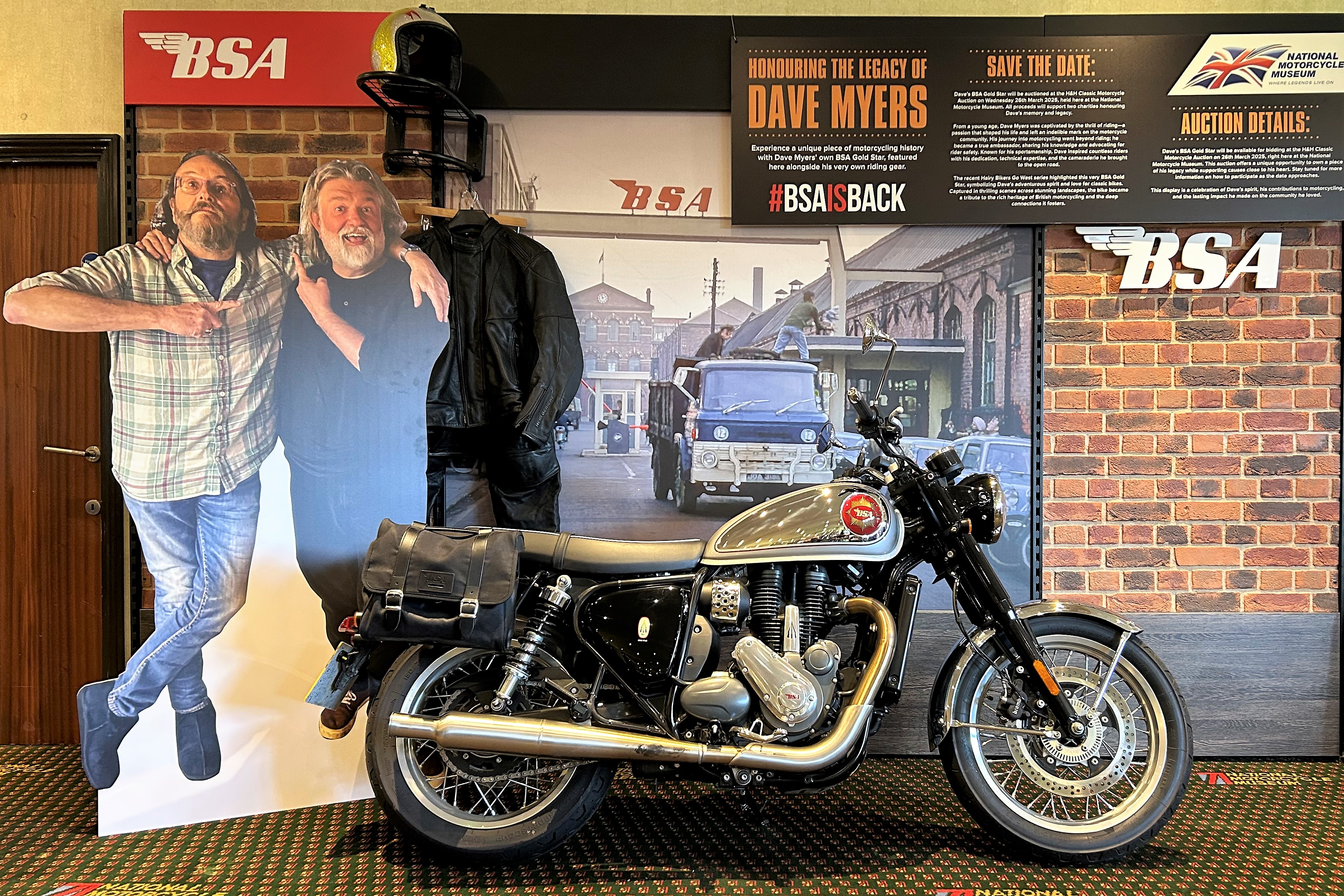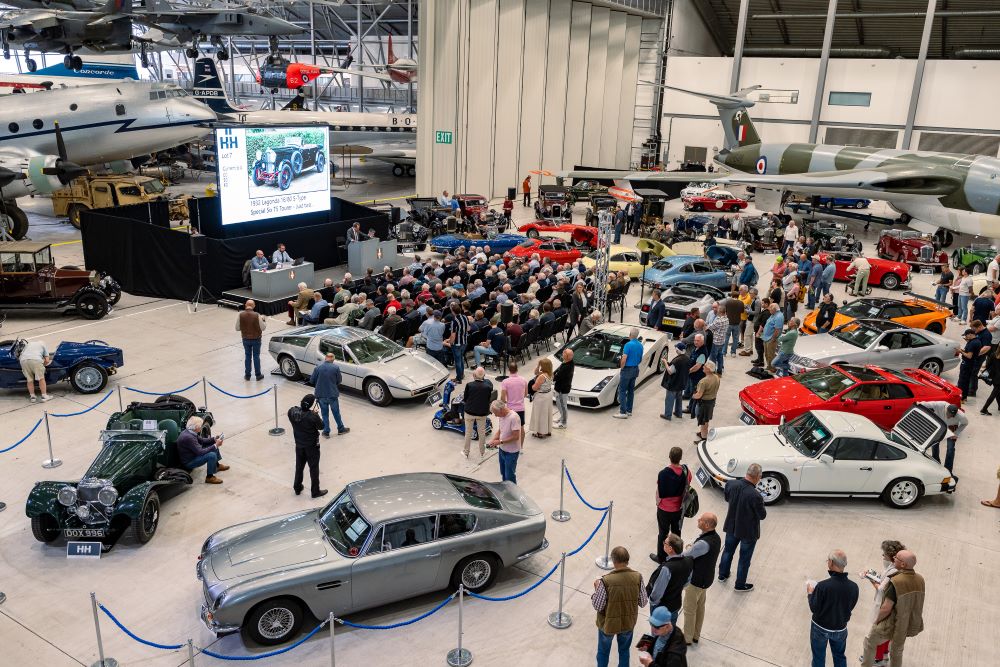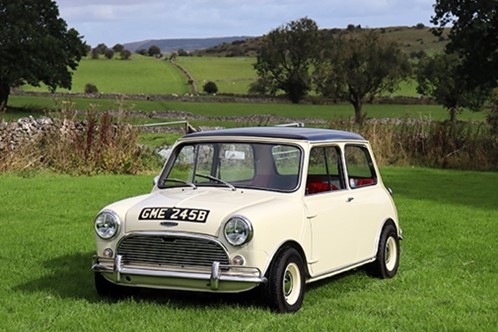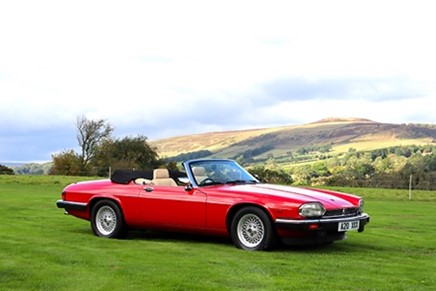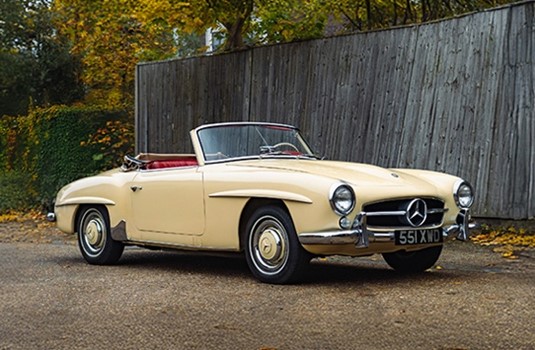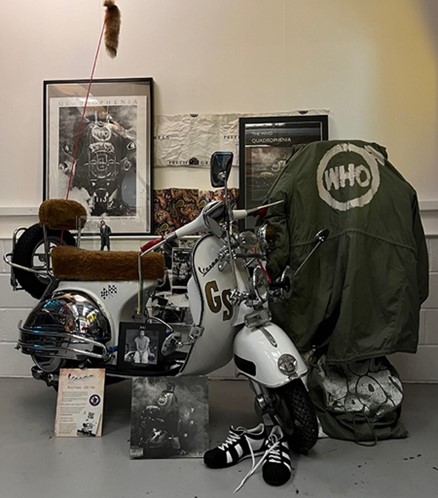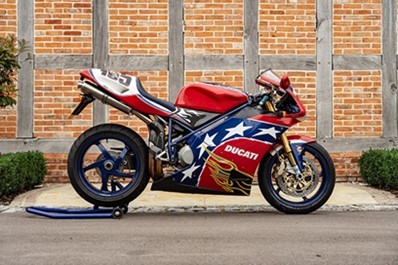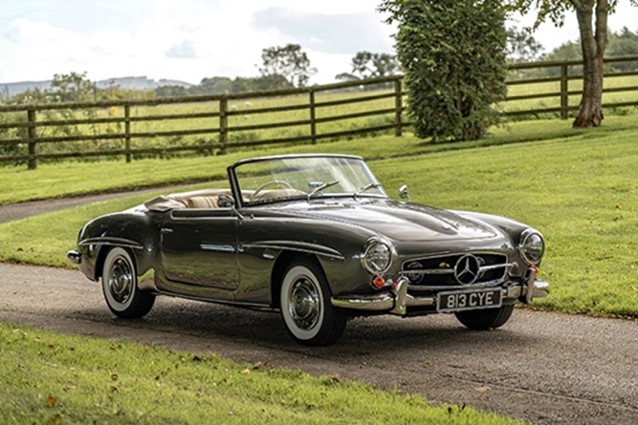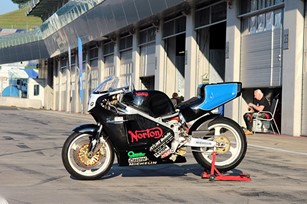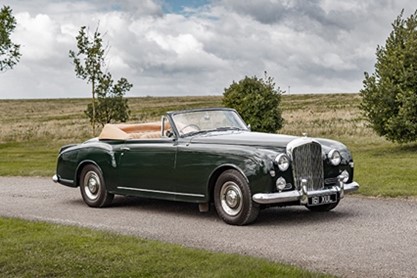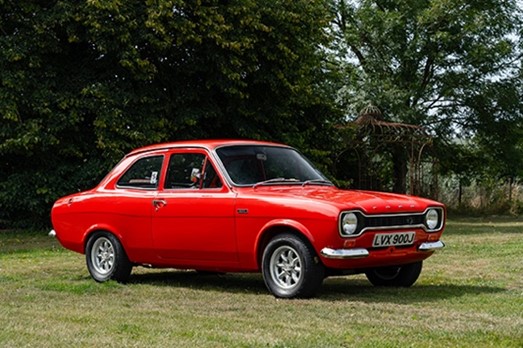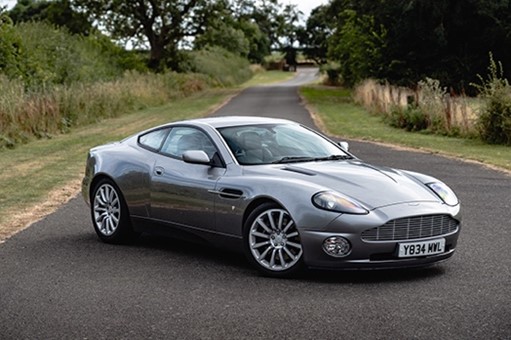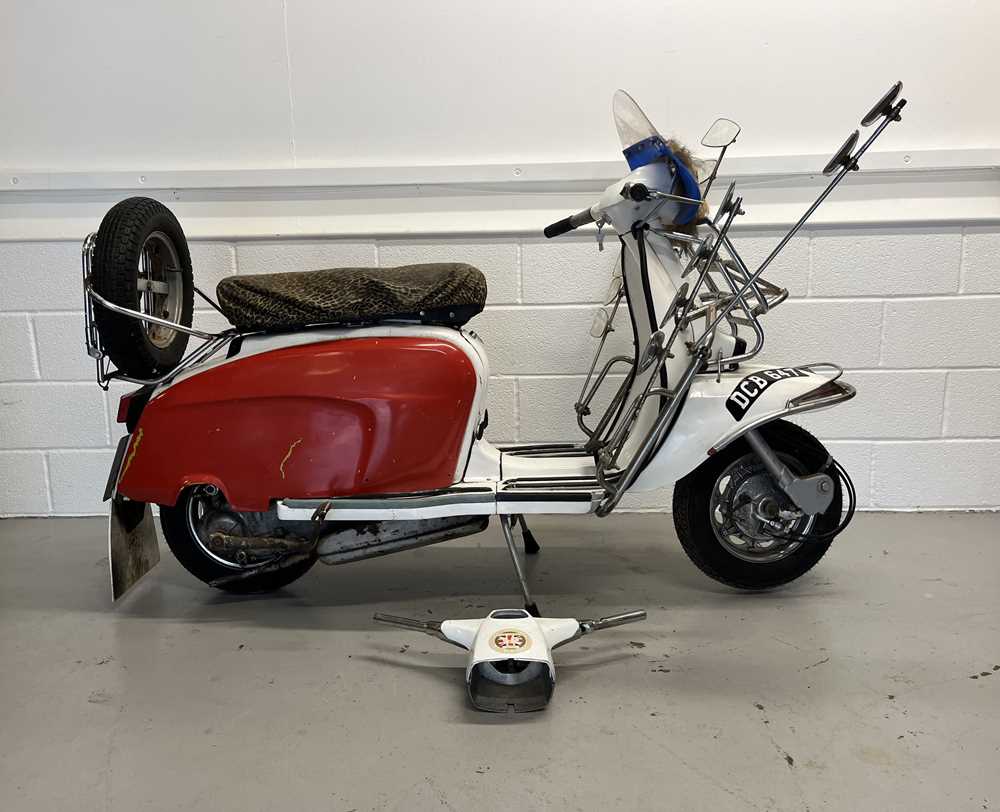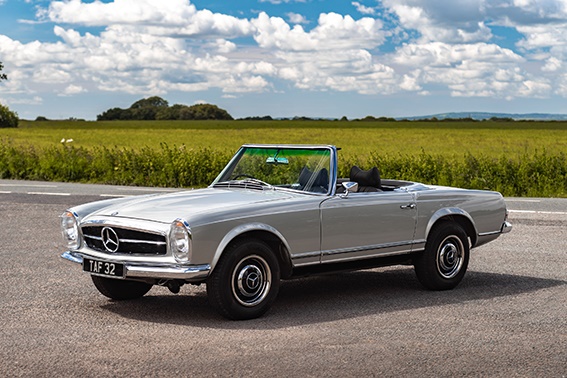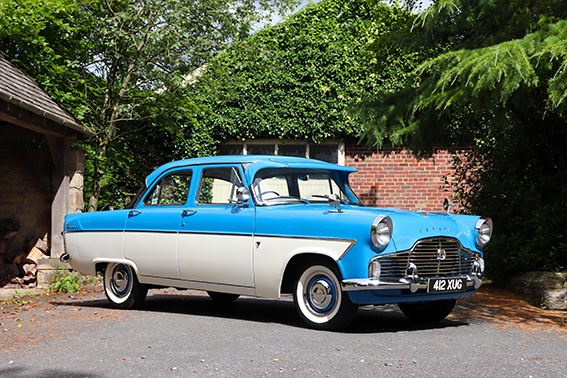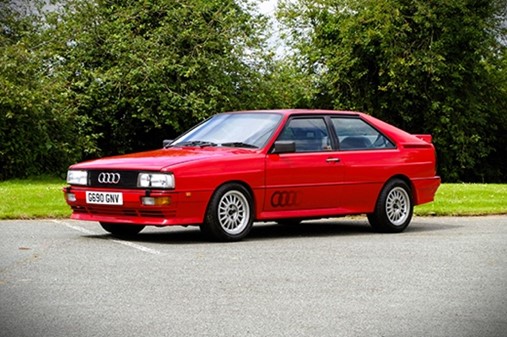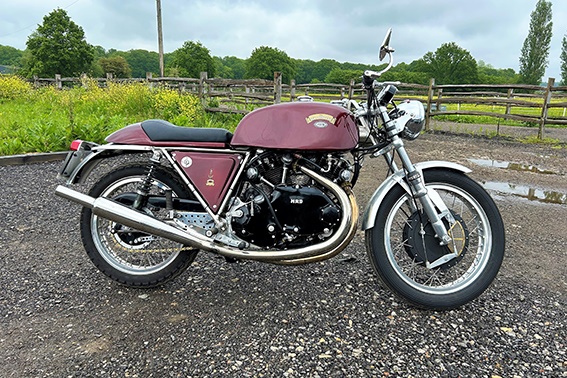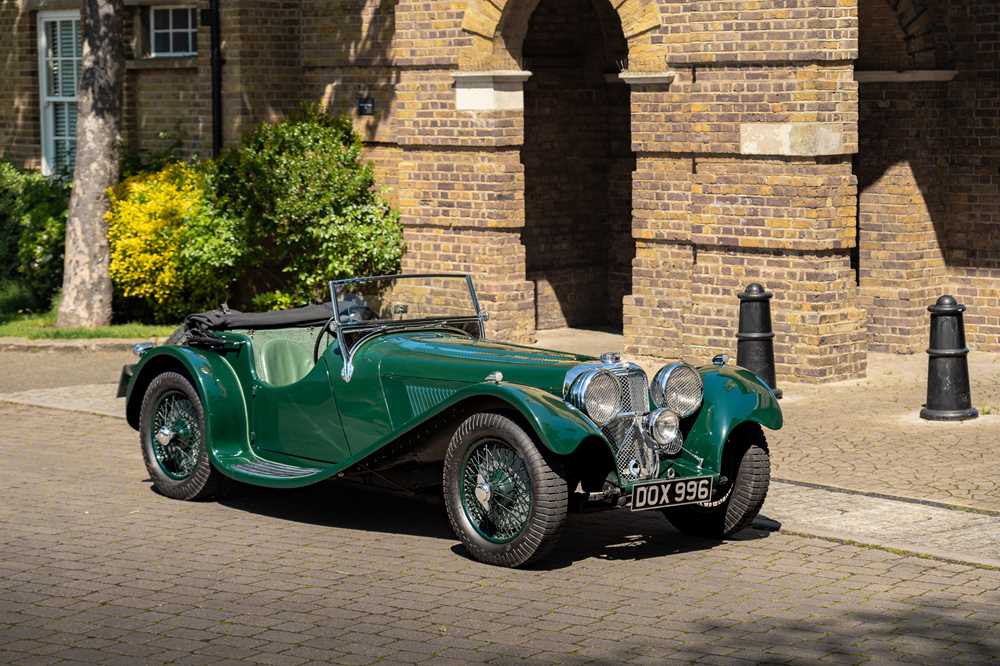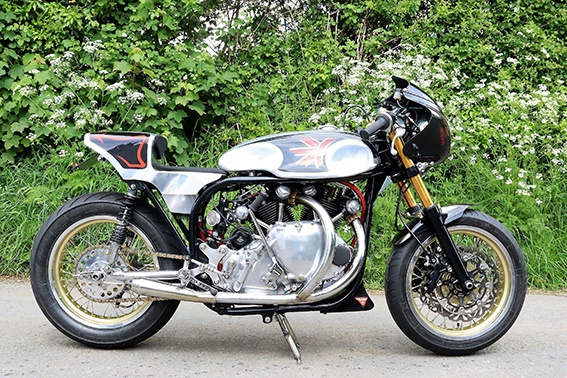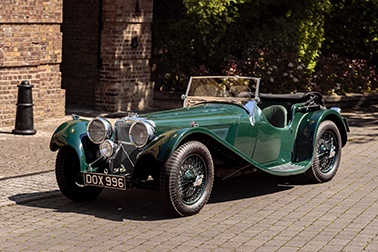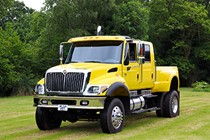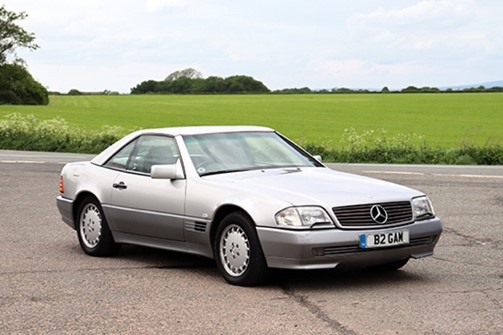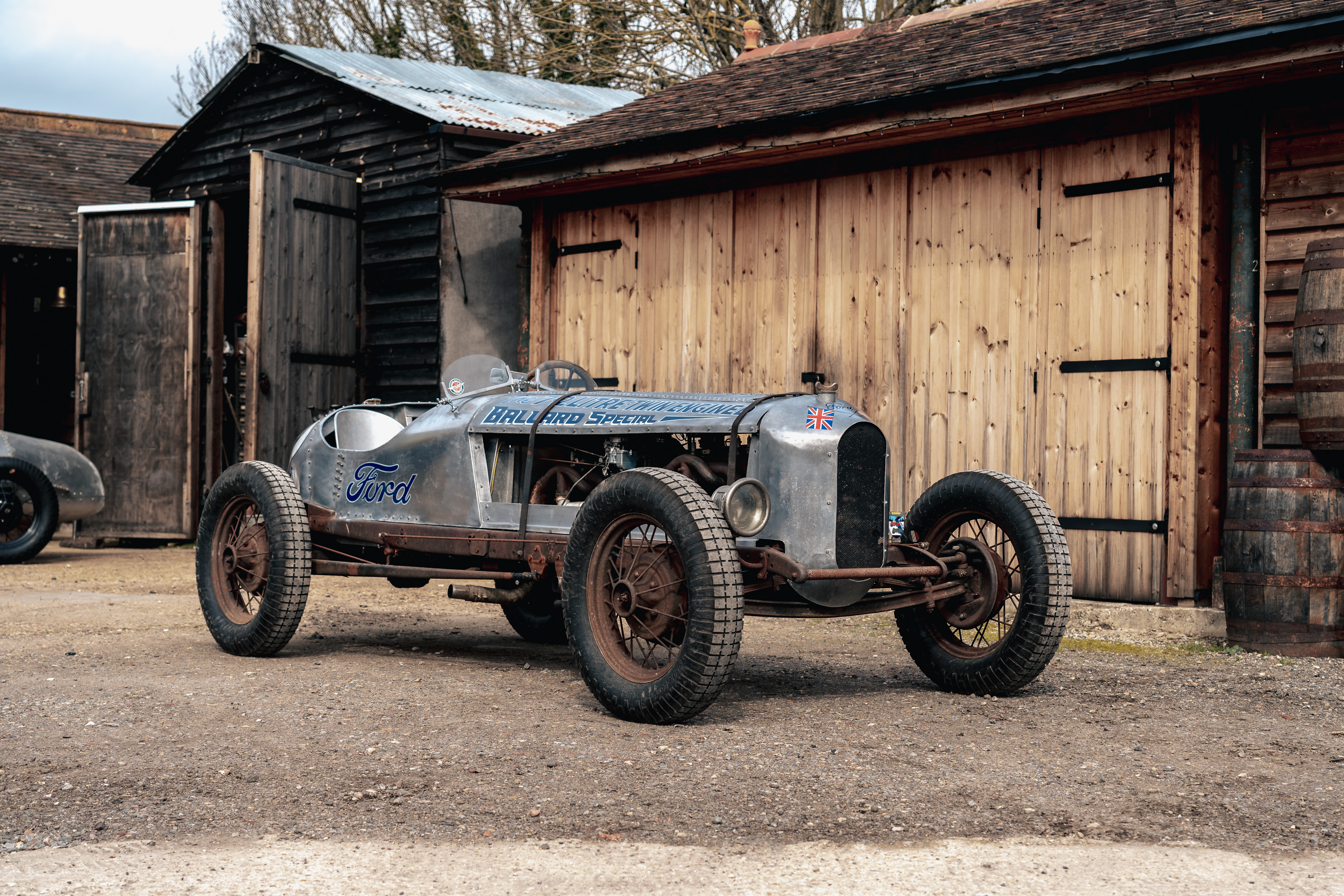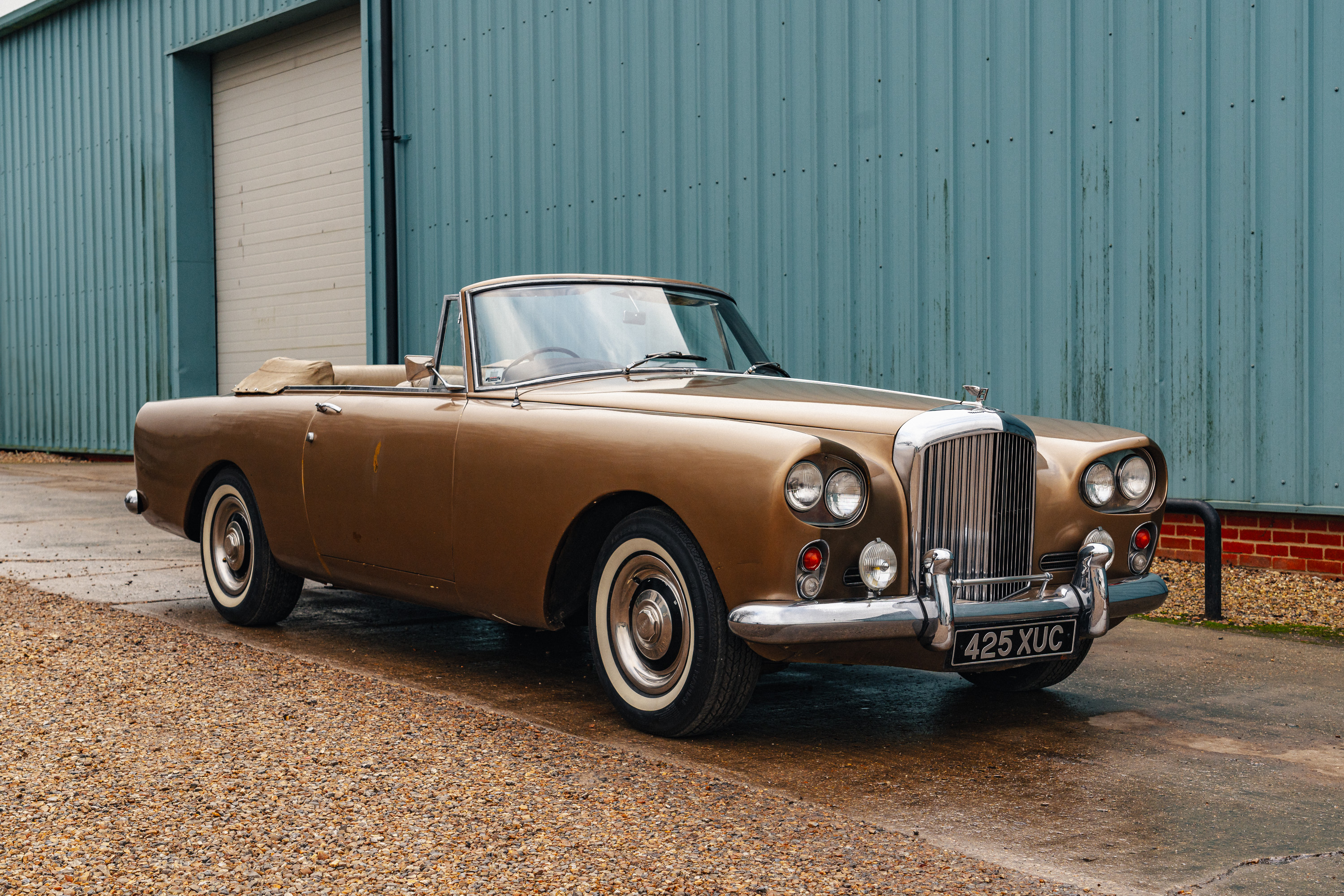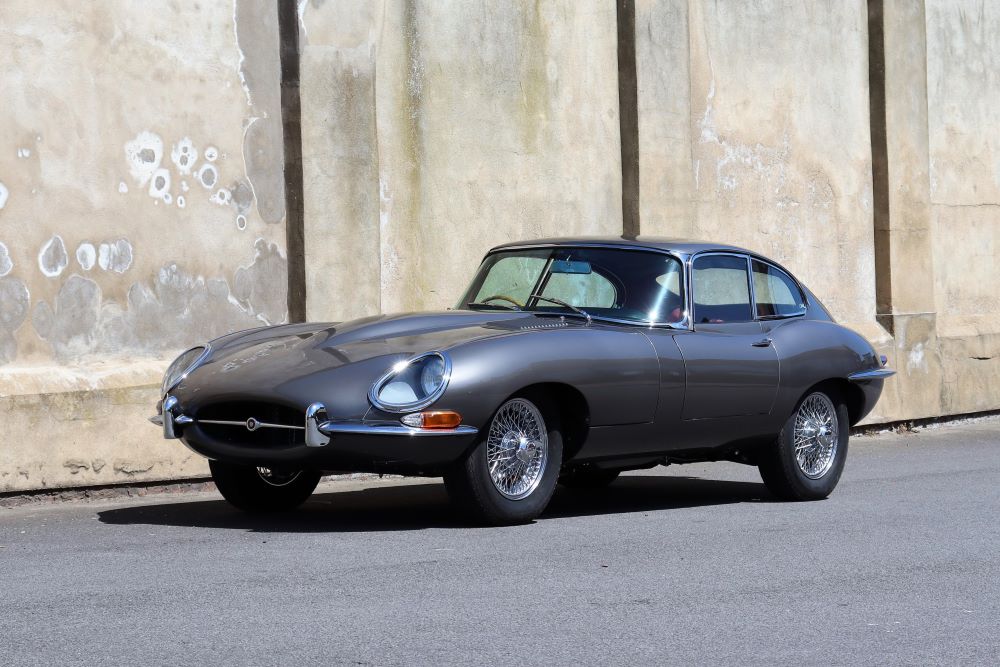21st Feb, 2006 0:00
The Centaur

1983/5 EMKA-Aston Martin Group C1 Race Cars
Estimated at £180,000 - £200,000
Lot details
Registration No: N/A
Chassis No: T.B.A.
Mot Expiry: N/A
1983 Hawaiian Tropic Livery - 5.4 litre Aston Martin V8
Group C1 (C83/1) MC01
Designed by GT40 creator Len Bailey for Steve O'Rourke (the manager of Floyd and owner of the EMKA company) with the monocoque built by Maurice Gomm's factory in Woking and the outer panels by Protoco in London.
The whole car was then built and prepared for competition by the very experienced Michael Cane Racing team with Dave Knott, Mark Julian and Alan Charles in the Godalming workshops.
O'Rourke was keen to race in Group C and discussions with Cane confirmed that a car weighing 850kg with some aerodynamic downforce, coupled to a normally aspirated engine of relatively modest power could be successful.
They decided that the Aston Martin V8 (5340cc) would be suitable and Tickford was involved in this concept from the start and Dave Morgan advised that race inspired modifications to the engine would give huge advantages in getting the whole package to work.
Some of these ideas he had already promoted for the Nimrod project but they had eliciting a 'negative' from that camp.
The idea was to use the engine as stressed member, at the same time making the whole package more compact and lighter. Thus changes had to be made to some of the castings and a number of ancillaries were moved.
The water pumps, one per bank, were now to be external items and the distributor, alternator and metering unit now resided in the vee between the induction manifolds.
Although there were other plans to develop 32 valve heads and electronic fuel injection, neither was adopted for the EMKA engine. In fact the heads were the only original castings retained for the project, the block being revised, not least, to allow different water flow routes to each bank.
Len Bailey and Michael Cane were looking for a shorter, lighter engine and the revised unit lost nearly five inches and around 50lbs. In addition, by moving from a thirteen inch to a ten inch flywheel, the engine could be lowered.
Another of the aims of Dave Morgan was to improve the overall performance of the engine with better power delivery and a flatter torque curve. Changes were made to the valve timing, inlet manifolding and exhaust system, the outcome being an unchanged power output of 570bhp at slightly less revs (7,000rpm - torque 460) and a minimum of 420lb ft between 4,500 and 7,000 rpm.
Better reliability came from revisions to the tappets and, in order to use the extra power available at higher revs in sprint races, top quality progressive rate valve springs were fitted making the engine 'safe' for 8,000rpm.
The first race for the car was at the 1983 Silverstone 1000kms, the red car sporting some sponsorship from Virgin. The three drivers were Tiff Needell, Steve O'Rourke and Jeff Allam and Needell recorded a time of 1 minute 24.45 seconds in 16th place on the grid, just behind the Nimrod! To put this in perspective the Porsche 956 of Bellof/Bell was on pole 11 seconds quicker but it was a very respectable time for a brand new car and bode well for the race.
With a very wet start and the EMKA having to return to the pits with a broken distributor cap after one lap, and returning again after 20 laps with a loose plug lead, the car was going well in 9th place. Problems with the rear wing forced it into the pits for more repairs, taking it down to 13th where it stayed until a wheel bearing failure on the last lap stopped the car out on the circuit. An encouraging start, just a few weeks before the journey to Le Mans.
Nick Faure joined Needell and O'Rourke for the 1983 Le Mans and, after some minor modifications to get through scrutineering, the car weighed in at 50kg over the 850kg target but still some 50kg lighter than the much improved Nimrod.
Again the car was in red but now with Sponsorship from Hawaiian Tropic, Dow Corning, P&O, Webasto and several others.
The combination of suntan lovers and the Hawaiian Tropic girls creating huge interest in the car! Fastest of the three was, as expected, Tiff Needell in 3 minutes 42.23 seconds, nearly eight seconds quicker than his first runs, following on from changes made by Michael Cane's team.
The car attained just 209mph maximum, substantially down on the Nimrod and an area that was to dramatically improve in the 1985 race. Thanks to a reported qualifying engine and tyres, Ickx's time in the Rothmans Porsche 956 was an unbelievable 3 minutes 16.6 seconds!
During the second hour a stone thrown up by one of the Porsche's punctured the radiator resulting in a 45 minute delay and this dropped the car back and it was further delayed by repairs to a door and replacement of an oil tank and a wishbone. Having at one point dropped back to 37th place and moved back up to 29th by midnight, the car was now in 19th at 3am only for Nick Faure to have hot oil sprayed in his face from a split line! Along with these repairs and the total rebuild of the rear hubs they lost over two hours putting the car back to 26th.
Two more unscheduled stops for a door repair and loose rear wing did not stop the car moving up the placings and, when it crossed the line, it was in 17th place resulting in the award of the Motor Trophy for the first British car home, an amazing result for Michael Cane and the three drivers in only the second race for the new car.
No one was more pleased than Dave Morgan of Tickford, who had feared the worst when the car came in with the radiator gone and 'steam' warning of impending disaster!
Regrettably, sponsorship was not forthcoming for the 1984 season but there was also the FISA change of heart concerning the earlier proposed fuel consumption changes that effected the withdrawal from the 1984 season.
The 1985 EMKA in Dow Corning Livery
In May 1985 the EMKA returned for the Silverstone 1000km entered for Tiff Needell, Steve O'Rourke and Bob Evans, although the latter did not race the car.
In many ways it was a like a new car with a complete re-design of the underbody, removing nearly all the ground effect and sporting new rear bodywork incorporating a much revised engine air intake and new rear suspension with bigger hubs.
To quote Michael Cane "the difference in the car was like night and day and all due to the efforts of Richard Owen, the Shrike designer."
It also had Dow Corning as the major sponsor and incorporated several of their products in the design, including lubricants, seals, hoses and ignition leads. The combination of the Turquoise livery and sleek shape presented a very pleasing package.
Needell posted a 1 minute 20.75 second lap to put the car 17th on the grid, pole having been taken by Patrese in the Lancia in 1 minute 10.84 seconds.
Running in 11th place after 90 minutes and some forty minutes later the car was up to 16th but received a penalty for going straight through the chicane and, a little later, had a rear wishbone fail ending its race with bodywork damage. Better was to come at Le Mans in June.
In fact compared to the 1983 car the heavily revised car was a revelation, easily topping 216mph and Needell claimed the 13th fastest time in 3 minutes 33.12 seconds, a whole 9 seconds quicker than in 1983. This was an average of nearly 143mph and making the EMKA the fastest non turbo car. Steve O'Rourke and Nick Faure were again driving as in 1983.
With some people in the turbo cars keeping the pace down to match fuel consumption requirements, the EMKA, without those serious worries (although not as efficient as hoped) had worked its way up to 3rd.
By lap 6 Needell was up into 4th and at the end of lap 13, an inspired move by Michael Cane brought Needell into the pits for a 'short fill' of 50 litres and, when the leaders came in around the hour mark for their longer routine stops, the EMKA lead Le Mans for three or four glorious laps, eventually coming in again for fuel after 19 laps!
Nick Faure had got the car up to 6th by lap 33 and then he had to come in for fuel and, since they had been running slightly out of the pattern of the other top cars, Steve O'Rourke took over and the car dropped down to around 15th.
During the latter stages of the race the Bob Tullius Jaguar XJR5 and EMKA were running 14th and 15th but around the 19th hour the Jaguar had a serious misfire and lost time to the EMKA and, by the 21st hour mark, the Jaguar was in 11th and the EMKA in 13th.
Then mid morning the EMKA had a split clutch pipe and the pipe was replaced but with a 'new' and faulty union, the whole process taking much longer than necessary.
With less than an hour to go a failed petrol union lost them another twenty minutes and they were mighty lucky not to have a fire with fuel all around the engine bay.
One can always say 'if' but without these relatively minor problems the car may have been tenth. Meanwhile the Jaguar had been stopped in the pits and the Brun Porsche had retired allowing the EMKA to finish in a fantastic 11th place and again receive the Motor Trophy for first British Car home!
Needless to say Steve O'Rourke and the team were delighted to have beaten the Group 44 Jaguar of Bob Tullius.
The EMKA then raced at the Spa 1000km in September but after the successful run at Le Mans they started to have engine problems. Needell qualified the car in 2 minutes 20.99 seconds and on this occasion was supported by O'Rourke and James Weaver, although with no fuel pressure the car was retired after just 9 laps and Weaver did not drive.
The last race for the car came at Brands Hatch in late September with O'Rourke and Needell being joined by Mark Galvin.
Needell qualified in 1 minute 23.98 seconds in 10th place, the later specification Tickford engine having dropped a valve. This time was set with the old engine, which the drivers thought was more powerful!
Needell got up to eighth on the first lap and moved up to fourth only to be delayed with rear suspension problems and eventually retired when a water pump belt failed. The car never raced again in the period.
As the Dow Corning (1985) car was built on the 1983 car, this 'early car' was the subject of a re-creation programme in 1989 carried out by Steve O'Rourke's mechanic, James Tomkins, at the EMKA workshops.
James Tomkins said that no new parts were made and the whole project was completed using some of the existing parts from the '83 car and many spares built to the later specification for the 1985 car, making it much closer to the 1985 specification, with the later rear bodywork, but using the 1983 livery.
James was employed by Michael Cane, just before Cane moved to Williams and thus Cane had little or no involvement in Steve O'Rourke's last plan for this car.
Both these cars have run in the Group C/GTP Historic races in the last four/five years when the Dow Corning car had the fuel injection upgraded to electronic.
Both have FIA HTPs and would make an ideal basis for a super Aston Martin team in the very active Group C/GTP Racing club's dozen or so races per season.
Registration No: N/A
Chassis No: T.B.A.
Mot Expiry: N/A
1983 Hawaiian Tropic Livery - 5.4 litre Aston Martin V8
Group C1 (C83/1) MC01
Designed by GT40 creator Len Bailey for Steve O'Rourke (the manager of Floyd and owner of the EMKA company) with the monocoque built by Maurice Gomm's factory in Woking and the outer panels by Protoco in London.
The whole car was then built and prepared for competition by the very experienced Michael Cane Racing team with Dave Knott, Mark Julian and Alan Charles in the Godalming workshops.
O'Rourke was keen to race in Group C and discussions with Cane confirmed that a car weighing 850kg with some aerodynamic downforce, coupled to a normally aspirated engine of relatively modest power could be successful.
They decided that the Aston Martin V8 (5340cc) would be suitable and Tickford was involved in this concept from the start and Dave Morgan advised that race inspired modifications to the engine would give huge advantages in getting the whole package to work.
Some of these ideas he had already promoted for the Nimrod project but they had eliciting a 'negative' from that camp.
The idea was to use the engine as stressed member, at the same time making the whole package more compact and lighter. Thus changes had to be made to some of the castings and a number of ancillaries were moved.
The water pumps, one per bank, were now to be external items and the distributor, alternator and metering unit now resided in the vee between the induction manifolds.
Although there were other plans to develop 32 valve heads and electronic fuel injection, neither was adopted for the EMKA engine. In fact the heads were the only original castings retained for the project, the block being revised, not least, to allow different water flow routes to each bank.
Len Bailey and Michael Cane were looking for a shorter, lighter engine and the revised unit lost nearly five inches and around 50lbs. In addition, by moving from a thirteen inch to a ten inch flywheel, the engine could be lowered.
Another of the aims of Dave Morgan was to improve the overall performance of the engine with better power delivery and a flatter torque curve. Changes were made to the valve timing, inlet manifolding and exhaust system, the outcome being an unchanged power output of 570bhp at slightly less revs (7,000rpm - torque 460) and a minimum of 420lb ft between 4,500 and 7,000 rpm.
Better reliability came from revisions to the tappets and, in order to use the extra power available at higher revs in sprint races, top quality progressive rate valve springs were fitted making the engine 'safe' for 8,000rpm.
The first race for the car was at the 1983 Silverstone 1000kms, the red car sporting some sponsorship from Virgin. The three drivers were Tiff Needell, Steve O'Rourke and Jeff Allam and Needell recorded a time of 1 minute 24.45 seconds in 16th place on the grid, just behind the Nimrod! To put this in perspective the Porsche 956 of Bellof/Bell was on pole 11 seconds quicker but it was a very respectable time for a brand new car and bode well for the race.
With a very wet start and the EMKA having to return to the pits with a broken distributor cap after one lap, and returning again after 20 laps with a loose plug lead, the car was going well in 9th place. Problems with the rear wing forced it into the pits for more repairs, taking it down to 13th where it stayed until a wheel bearing failure on the last lap stopped the car out on the circuit. An encouraging start, just a few weeks before the journey to Le Mans.
Nick Faure joined Needell and O'Rourke for the 1983 Le Mans and, after some minor modifications to get through scrutineering, the car weighed in at 50kg over the 850kg target but still some 50kg lighter than the much improved Nimrod.
Again the car was in red but now with Sponsorship from Hawaiian Tropic, Dow Corning, P&O, Webasto and several others.
The combination of suntan lovers and the Hawaiian Tropic girls creating huge interest in the car! Fastest of the three was, as expected, Tiff Needell in 3 minutes 42.23 seconds, nearly eight seconds quicker than his first runs, following on from changes made by Michael Cane's team.
The car attained just 209mph maximum, substantially down on the Nimrod and an area that was to dramatically improve in the 1985 race. Thanks to a reported qualifying engine and tyres, Ickx's time in the Rothmans Porsche 956 was an unbelievable 3 minutes 16.6 seconds!
During the second hour a stone thrown up by one of the Porsche's punctured the radiator resulting in a 45 minute delay and this dropped the car back and it was further delayed by repairs to a door and replacement of an oil tank and a wishbone. Having at one point dropped back to 37th place and moved back up to 29th by midnight, the car was now in 19th at 3am only for Nick Faure to have hot oil sprayed in his face from a split line! Along with these repairs and the total rebuild of the rear hubs they lost over two hours putting the car back to 26th.
Two more unscheduled stops for a door repair and loose rear wing did not stop the car moving up the placings and, when it crossed the line, it was in 17th place resulting in the award of the Motor Trophy for the first British car home, an amazing result for Michael Cane and the three drivers in only the second race for the new car.
No one was more pleased than Dave Morgan of Tickford, who had feared the worst when the car came in with the radiator gone and 'steam' warning of impending disaster!
Regrettably, sponsorship was not forthcoming for the 1984 season but there was also the FISA change of heart concerning the earlier proposed fuel consumption changes that effected the withdrawal from the 1984 season.
The 1985 EMKA in Dow Corning Livery
In May 1985 the EMKA returned for the Silverstone 1000km entered for Tiff Needell, Steve O'Rourke and Bob Evans, although the latter did not race the car.
In many ways it was a like a new car with a complete re-design of the underbody, removing nearly all the ground effect and sporting new rear bodywork incorporating a much revised engine air intake and new rear suspension with bigger hubs.
To quote Michael Cane "the difference in the car was like night and day and all due to the efforts of Richard Owen, the Shrike designer."
It also had Dow Corning as the major sponsor and incorporated several of their products in the design, including lubricants, seals, hoses and ignition leads. The combination of the Turquoise livery and sleek shape presented a very pleasing package.
Needell posted a 1 minute 20.75 second lap to put the car 17th on the grid, pole having been taken by Patrese in the Lancia in 1 minute 10.84 seconds.
Running in 11th place after 90 minutes and some forty minutes later the car was up to 16th but received a penalty for going straight through the chicane and, a little later, had a rear wishbone fail ending its race with bodywork damage. Better was to come at Le Mans in June.
In fact compared to the 1983 car the heavily revised car was a revelation, easily topping 216mph and Needell claimed the 13th fastest time in 3 minutes 33.12 seconds, a whole 9 seconds quicker than in 1983. This was an average of nearly 143mph and making the EMKA the fastest non turbo car. Steve O'Rourke and Nick Faure were again driving as in 1983.
With some people in the turbo cars keeping the pace down to match fuel consumption requirements, the EMKA, without those serious worries (although not as efficient as hoped) had worked its way up to 3rd.
By lap 6 Needell was up into 4th and at the end of lap 13, an inspired move by Michael Cane brought Needell into the pits for a 'short fill' of 50 litres and, when the leaders came in around the hour mark for their longer routine stops, the EMKA lead Le Mans for three or four glorious laps, eventually coming in again for fuel after 19 laps!
Nick Faure had got the car up to 6th by lap 33 and then he had to come in for fuel and, since they had been running slightly out of the pattern of the other top cars, Steve O'Rourke took over and the car dropped down to around 15th.
During the latter stages of the race the Bob Tullius Jaguar XJR5 and EMKA were running 14th and 15th but around the 19th hour the Jaguar had a serious misfire and lost time to the EMKA and, by the 21st hour mark, the Jaguar was in 11th and the EMKA in 13th.
Then mid morning the EMKA had a split clutch pipe and the pipe was replaced but with a 'new' and faulty union, the whole process taking much longer than necessary.
With less than an hour to go a failed petrol union lost them another twenty minutes and they were mighty lucky not to have a fire with fuel all around the engine bay.
One can always say 'if' but without these relatively minor problems the car may have been tenth. Meanwhile the Jaguar had been stopped in the pits and the Brun Porsche had retired allowing the EMKA to finish in a fantastic 11th place and again receive the Motor Trophy for first British Car home!
Needless to say Steve O'Rourke and the team were delighted to have beaten the Group 44 Jaguar of Bob Tullius.
The EMKA then raced at the Spa 1000km in September but after the successful run at Le Mans they started to have engine problems. Needell qualified the car in 2 minutes 20.99 seconds and on this occasion was supported by O'Rourke and James Weaver, although with no fuel pressure the car was retired after just 9 laps and Weaver did not drive.
The last race for the car came at Brands Hatch in late September with O'Rourke and Needell being joined by Mark Galvin.
Needell qualified in 1 minute 23.98 seconds in 10th place, the later specification Tickford engine having dropped a valve. This time was set with the old engine, which the drivers thought was more powerful!
Needell got up to eighth on the first lap and moved up to fourth only to be delayed with rear suspension problems and eventually retired when a water pump belt failed. The car never raced again in the period.
As the Dow Corning (1985) car was built on the 1983 car, this 'early car' was the subject of a re-creation programme in 1989 carried out by Steve O'Rourke's mechanic, James Tomkins, at the EMKA workshops.
James Tomkins said that no new parts were made and the whole project was completed using some of the existing parts from the '83 car and many spares built to the later specification for the 1985 car, making it much closer to the 1985 specification, with the later rear bodywork, but using the 1983 livery.
James was employed by Michael Cane, just before Cane moved to Williams and thus Cane had little or no involvement in Steve O'Rourke's last plan for this car.
Both these cars have run in the Group C/GTP Historic races in the last four/five years when the Dow Corning car had the fuel injection upgraded to electronic.
Both have FIA HTPs and would make an ideal basis for a super Aston Martin team in the very active Group C/GTP Racing club's dozen or so races per season.
Auction: The Centaur, 21st Feb, 2006
All successful bids must be paid in full by midday the day after the auction at the latest.
You can collect your new pride and joy from our venue until 1pm the day following the sale or our partners are on hand to help arrange safe transportation:
Do you have an item to sell?
If so, contact one of our friendly specialists for your free valuation by completing the form below and someone will get back to you as quickly as possible.
If you prefer to speak to humans, don't hesitate to call our office on +44 (0)1925 210035
Other lots in this sale





